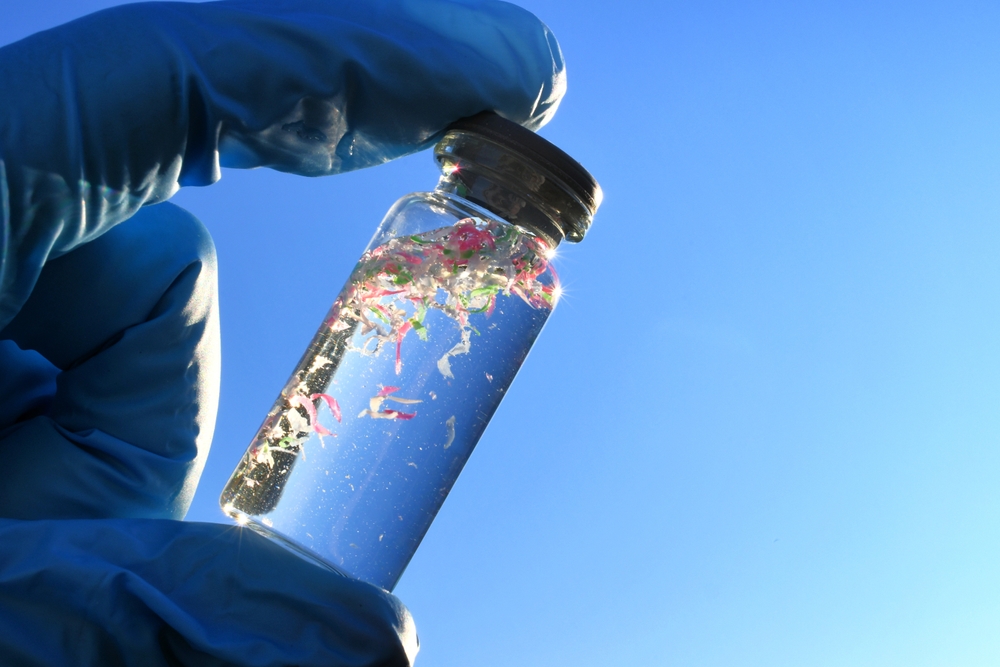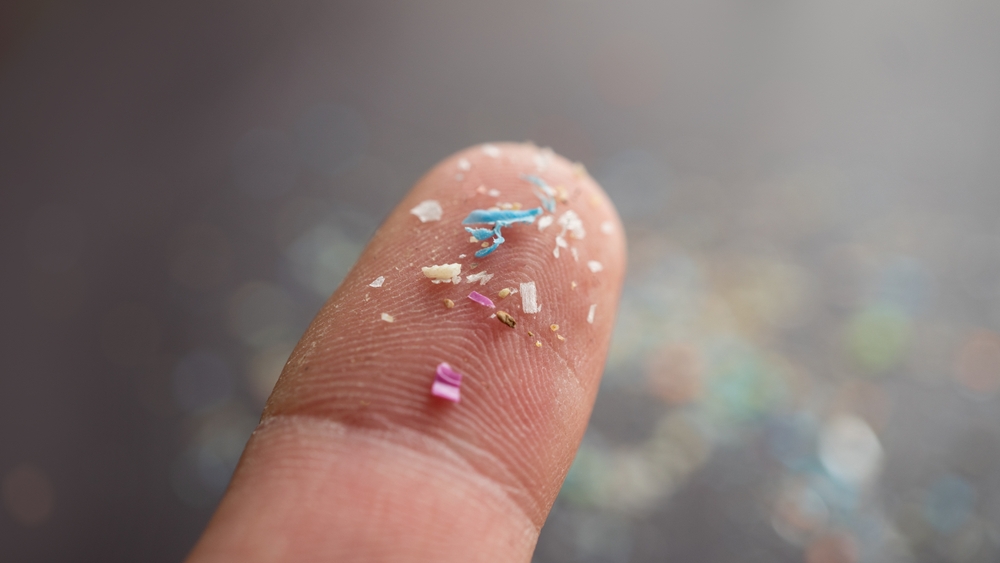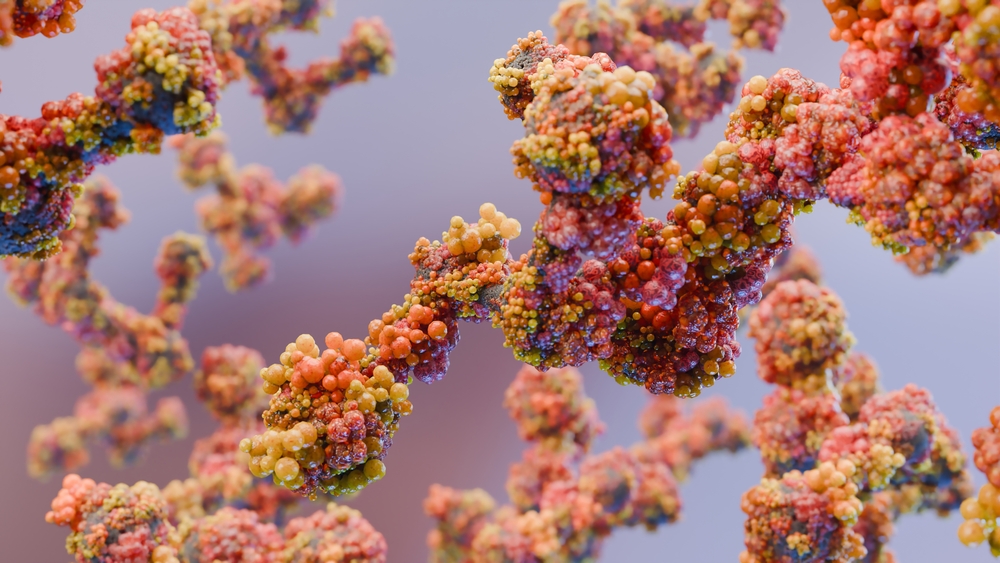Your cart is currently empty!
These Wax Worm Caterpillars Can Eat & Digest a Plastic Bag in Just One Day

Scientists held their breath as they cut open the belly of the world’s largest animal. What tumbled out was horrifying: thousands of pieces of plastic weighing 220 pounds. In winter 2019, a young sperm whale died on Luskentyre Beach in Scotland. Plastic bags and nylon fishing nets had clogged the digestive system and starved the creature to death.
Heartbreaking scenes like these appear with disturbing frequency in recent years. Efforts to reduce plastic waste through reusing and recycling fall short of what’s needed. Yet a recent discovery has brought relief to scientists and environmentalists. An amateur beekeeper stumbled upon something remarkable while cleaning out her hives. What she found might change how we deal with the mountains of plastic choking our planet.
Beekeeper’s Accidental Discovery Could Solve Plastic Crisis

Dr. Federica Bertocchini works as a Spanish biologist and doubles as an amateur beekeeper. While cleaning out her hives one day, she noticed hive-damaging worms eating the beeswax and started removing them. After tossing the worms into a plastic bag, she spotted small holes forming in it.
Dr. Bertocchini examined the holes and realized something extraordinary was happening. Her biologist instincts kicked in, spurring her to bring the worms into a lab for testing. “My beehives were plagued with wax worms, so I started cleaning them, putting the worms in a plastic bag. After a while, I noticed lots of holes and we found it wasn’t only chewing, it was [chemical breakdown], so that was the beginning of the story.”
Galleria mellonella larvae, known as wax worms, can seemingly eat polyethylene. People commonly use these caterpillars as fishing bait. They infest beehives naturally, feeding on beeswax inside honeycombs. Nobody expected them to possess such a remarkable ability with human-made materials.
Wax Worms Devour One of the Toughest Plastics Ever Made

Polyethylene makes up 30 percent of all plastic production worldwide. Manufacturers use it in bags and other packaging, which creates a big part of global plastic pollution. Scientists describe it as one of the longest-lasting plastics that is simple to make but hard to break down.
Subsequent tests revealed the capability of these worms to chemically dissolve plastic at an unprecedented rate. Centuries pass before polyethylene naturally degrades in the environment. Wax worms accomplish the same task in hours.
Beeswax and plastic share a common feature: both consist of long chains of carbon. Phenol oxidase enzymes in worm saliva oxidize and destroy these polymers. Chemical breakdown occurs, not just mechanical chewing. Workers at the Biological Research Centre in Madrid published their findings in the journal Nature Communications.
Enzymes in Worm Spit Actually Dissolve Plastic at Room Temperature
Research teams identified 200 proteins in wax worm saliva and narrowed down the search to two key enzymes responsible for the plastic-eating effect. Temperature requirements make this discovery even more valuable. Most chemical processes for breaking down plastic need lots of heating. Wax worm enzymes work at normal room temperature, in water, and at neutral pH.
Scientists described the study’s implications: “This study suggests insect saliva might [be] a depository of degrading enzymes which could revolutionise the bioremediation field.”
Experiments tracked the breakdown process using optical microscopy. Images showed PET microparticles gradually digesting at room temperature as time progressed. Most particles disappeared after 10 days at room temperature. Higher temperatures accelerated the process even more, with particles vanishing after just 9 hours at 60 degrees Celsius.
Scanning electron microscopy revealed surface damage to polymer films treated with the enzymes. Films showed characteristic defects after 15 days of exposure, while untreated films displayed smooth and uniform surfaces.
Plastic Bags Disappear in Hours Instead of Centuries

Speed separates this discovery from previous attempts to tackle plastic pollution. Plastic normally persists in the environment for hundreds of years. Polyethylene bags buried in landfills remain intact for centuries, breaking into smaller pieces but never truly disappearing.
Wax worm enzymes cut that timeline from centuries to hours. Room temperature conditions allow the reaction to proceed without expensive heating equipment or special facilities. Water serves as the medium, avoiding harsh chemicals or extreme conditions.
Professor Andy Pickford, director of the Centre for Enzyme Innovation at the University of Portsmouth, called the discovery exciting. He noted that the reaction happens within a few hours at room temperature, suggesting enzymatic breakdown may provide a route to making use of polyethylene waste.
Beyond Plastic Bags to Multiple Polymer Types
Range matters as much as speed when addressing plastic pollution. Different types of plastic require different solutions. Wax worm enzymes demonstrated versatility across multiple polymer types.
Testing revealed the enzymes could break down PET (polyethylene terephthalate), commonly used in drink bottles. PBT (polybutylene terephthalate) and PBS (polybutylene succinate) also fell to the enzymes. Researchers tested films, microparticles, and various forms of these plastics with similar success.
Scientists previously discovered a super-enzyme that breaks down PET bottles, inspired by a bug found in a waste dump in Japan. Another bug from a waste dump can eat polyurethane, a plastic that sees wide use but rarely gets recycled. Bacteria in oceans and soils across the globe are evolving to eat plastic, with one 2021 study identifying 30,000 different enzymes that might degrade 10 different types of plastic.
Harvesting Enzyme Solution Beats Raising Millions of Baby Worms

Raising millions of baby worms and letting them wander through plastic waste sounds impractical. A more sensible solution involves harvesting and replicating the enzymes for plastic degradation.
Dr. Bertocchini suggests water-based enzyme solutions could be implemented by waste processing plants or at-home plastic waste kits. Such a distribution would establish wider access to this technology. With participation from families around the world, small efforts accumulate into a major impact.
Chemical breakdown creates valuable end products. TPA (terephthalic acid) and ethylene glycol result from PET treatment. Under certain conditions, purified TPA can be reused. Natural components like ketones or alcohol remain after breakdown, deemed safe for release or reuse in other processes.
Scientists Create Non-Degradable Enzymes That Last in Soil and Seawater
Research published in the journal Chem shows scientists chemically synthesized a mirror-image version of a plastic-degrading enzyme. Creating this mirror image using D-amino acids instead of L-amino acids makes the enzyme resistant to breaking down itself.
Testing proved the mirror-image enzymes persisted for more than 15 days in soil extract and seawater. Natural enzymes degraded within two to four days in the same conditions. Enzymatic activity of mirror-image versions remained high in open environments, while natural versions lost effectiveness.
Soil environments and seawater contain microbes and other organisms that secrete enzymes. These environmental enzymes normally degrade protein-based tools, undermining practical applications. Mirror-image enzymes resist such biodegradation, making them potentially suitable for treating uncollectable micro and nano-plastics in soil or liquid environments.
Future possibilities include even more dramatic applications. Recent studies provided evidence of microplastics existing in the human gut, human placenta, and human blood. Thanks to the bioorthogonal nature of mirror-image enzymes and the low immunogenicity of D-amino acid proteins, they may potentially be used as synthetic enzymatic drugs to help digest and clear microplastic particles from the human body.
Technology Won’t Be Widespread for Decades But Shows the Way

Commercial application remains in early stages. High costs of enzyme synthesis and low yields create barriers to immediate widespread use. Chemical synthesis of mirror-image enzymes costs far more than any modest benefit from enhanced enzyme half-life at current prices.
Raw material costs for chemically synthesizing D-proteins stay low for most amino acids, with D-isoleucine as an exception. Systematic isoleucine substitution might reduce costs. Improved peptide synthesis methods, such as automated fast-flow peptide synthesis, could address yield issues.
Bio-recycling gains recognition as more people realize the efficiency of these methods. Using nature to make resources from waste represents a shift from purely mechanical or chemical industrial processes. Wax worms seem to act as messengers, reminding us to live in harmony with nature.
Millions of Tonnes Dumped Every Year From Everest to Ocean Depths
Scale matters when evaluating potential solutions. Millions of tonnes of plastic get dumped every year. Pollution pervades the planet, from the summit of Mount Everest to the deepest oceans. Only 9 percent of plastic waste gets recycled globally. Another 12 percent faces incineration, with the rest accumulating in natural environments.
Mechanical recycling at scale today creates lower-value products. Chemical breakdown could create valuable chemicals or, with some further processing, new plastic. Such approaches avoid the need for new virgin plastic made from oil.
Marine bacterial communities that degrade PET wastes efficiently represent another nature-based approach. Mixed flora have greater environmental adaptability, higher degradation rates, and broader usage scope for bioremediation. Yet microbes can catabolize PET into CO2, while enzymes produce TPA and ethylene glycol that can be reused.
Small Caterpillar Shows Us Big Solutions Hide in Unexpected Places

Wax worm saliva dissolving plastic might not become a widespread solution for decades. Yet it shines a light on sustainable ways to reduce waste. Multiple approaches working together offer the best path forward: reducing plastic use, proper collection and treatment of waste, and full recycling to cut new plastic production.
Nature provides answers if we pay attention. A humble caterpillar used as fishing bait holds keys to breaking down materials that resist decomposition for centuries. Other insects like beetles and butterfly larvae show promise for their plastic-eating potential. Bacteria evolve capabilities to address problems humans created.
Bio-inspired solutions require patience and investment. Scientists need to conduct extensive research and develop strategies to deal with plastic waste effectively. Home kits for recycling plastic bags into useful products might one day become a reality. Large recycling plants could implement enzyme solutions on industrial scales.
Small worms carry a big message about working with nature rather than against it. Solutions to human problems often hide in unexpected places. Sometimes the answer to our most pressing environmental challenges crawls right under our noses.
